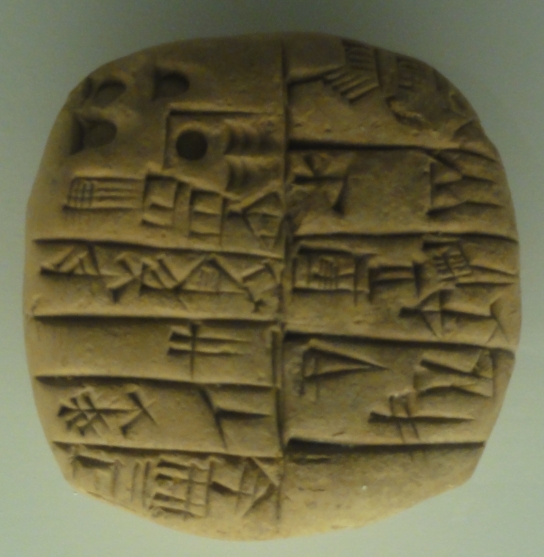Finally, I must talk about these two cuneiform tablets where we can see Mesopotamian figures. There are two ancient Sumerian administrative documents (offerings to a temple and a palace) from the Vorderasiastisches Museum of Berlin. They are dated in c. 2300 BC and we can distinguish the Archaic Mesopotamian numerals in them. In the first one (on the left), we can see some Mesopotamian numerals in the upper left corner:
The Archaic Mesopotamian System of Numeration consisted in the following symbols:

Source: G.Ifrah’s Historia universal de las cifras
From left to right, the values of the respectively symbols are 1, 10, 60, 600, 3.600 and 36.000. So we can see in the cuneiform tablet the numbers 3 x 600 = 1.800, 1 x 10 = 10 and 5 x 1 = 5. The Archaic numeration wasn’t a positional system so each number was constructed from the iteration of the different ciphers. However, the Sumerians adopted a system in which they could subtract ciphers in spite of adding them. For example, in our tablet, the number 1 x 10 + 5 x 1 = 15 is located inside an angle. This angle represents the operation “minus” so the number which we read in the tablet is 1.800- 15 = 1.785.
In the second tablet we can see the number 11 in the lower left corner.
Location: CaixaForum (map)

